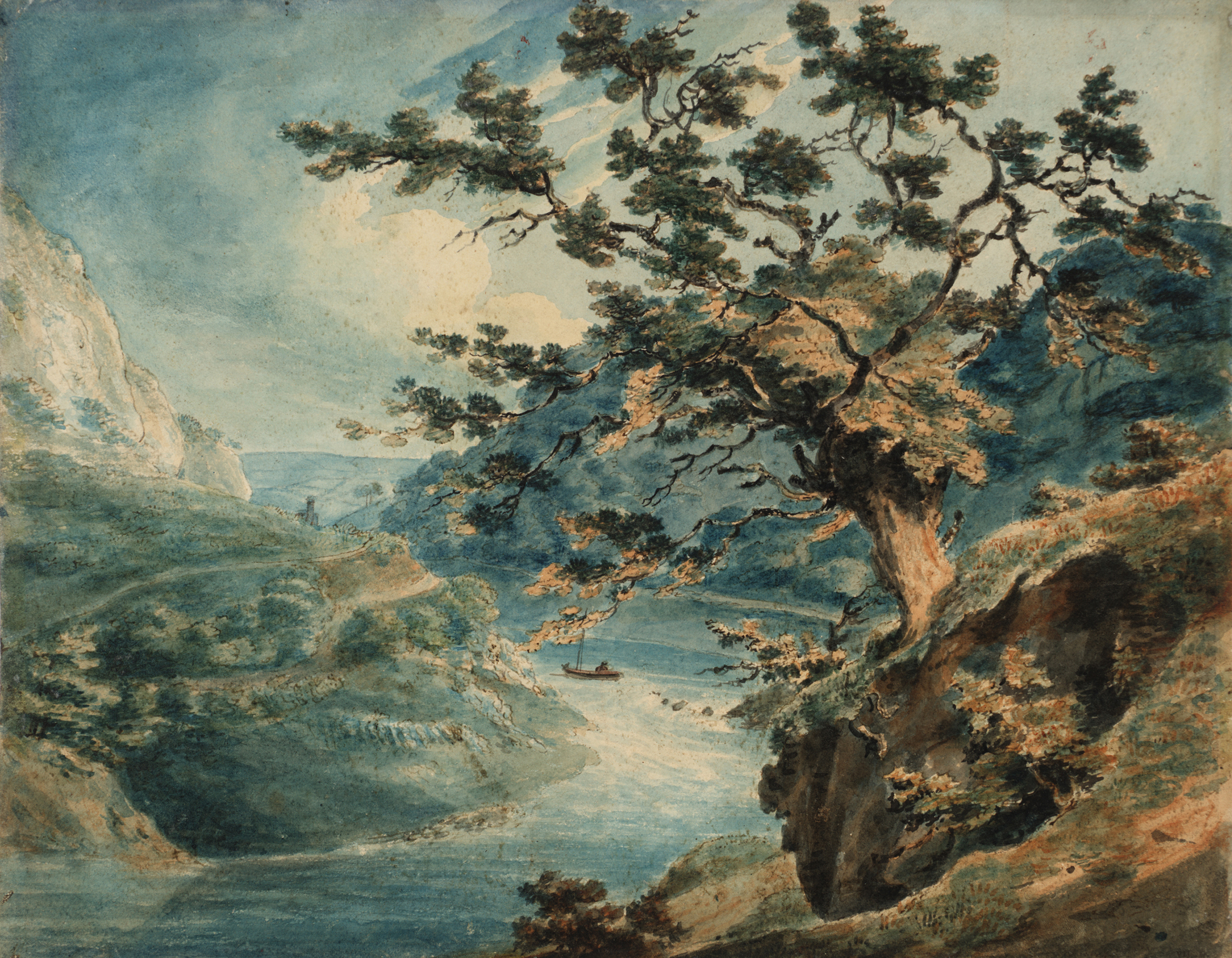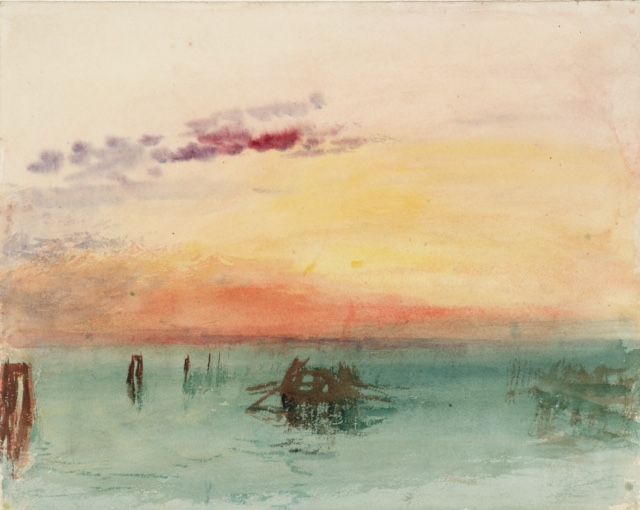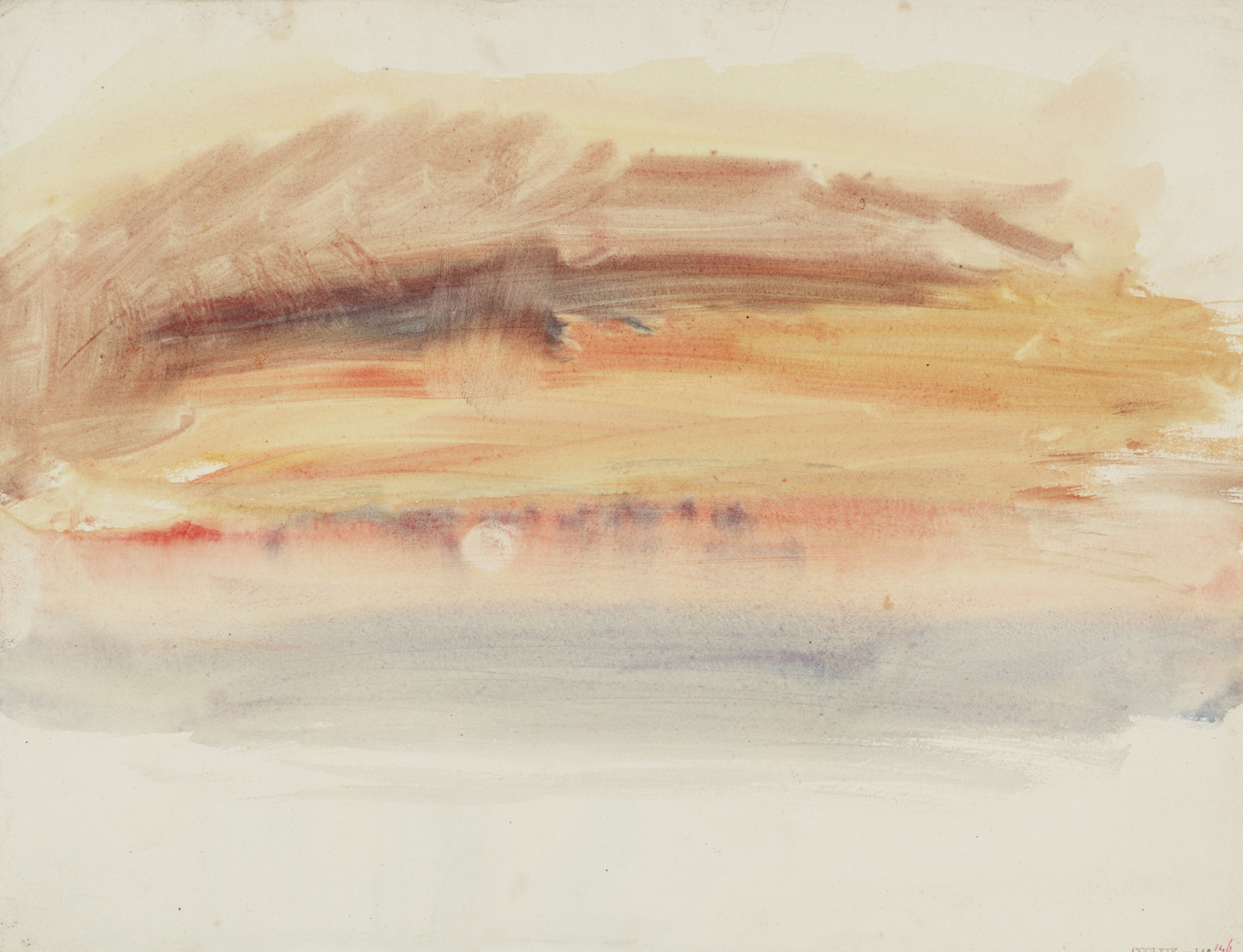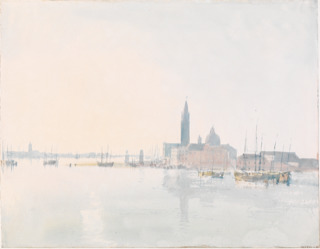William Turner, a romantic painter of the 19thcentury, is not just the academic artist, in vogue at court, that nobles quarreled. 60 watercolours and 10 paintings, loaned by Tate Britain to the Jacquemart-André Museum, show us the artist in his intimacy. Indeed, Turner also painted for his own pleasure and not to sell. The works, bequeathed to the British State, unknown to his contemporaries and a wide public, testify to his artistic quest and what distinguishes him from the painters of his time.
William Turner (1775-1851), unjustly unknown to the general public

William Turner, from a modest background, grew up almost alone. His mother was interned in an asylum, following the death of her younger sister. The child is raised in the family of his paternal uncle. Turner does not say that he had an unhappy childhood.
Self-taught, he always has a notebook in his hand to draw what surrounds him. He worked for an engraver as a printmaker and then at 14 with an architect, where he learned perspective and topography. The same year, he entered the Royal Academy. Turner then travelled through Britain at first, before visiting Italy, Switzerland, France and Germany.

Turner had a great predisposition for landscapes, which he sketched in the summer and transposed winter on canvas in his studio. We feel in him a duality between representation and expression.
At that time painting had conventions. Dark colors are arranged in the foreground and increasingly lighter tones in the following shots, this composition creating an aerial perspective. The subjects are classified, the noblest being the historical subject. We feel in Turner, even if he addresses these subjects, that they are only a pretext to express an idea, a feeling through the representation of the landscape that he shows us.
The landscape disappears into the canvas
 In this representation of Venice, we recognize the city, while it is just sketched. The light envelops the distance, the tones are so light that water, air and sky merge. Is it a dream or a vision? Does the painter describe what he sees? Or the feeling that the landscape inspires him? There is so much poetry of this minimalism with this mist that invades the space.
In this representation of Venice, we recognize the city, while it is just sketched. The light envelops the distance, the tones are so light that water, air and sky merge. Is it a dream or a vision? Does the painter describe what he sees? Or the feeling that the landscape inspires him? There is so much poetry of this minimalism with this mist that invades the space.
On the edge of abstraction
 Here, the painter chooses to show Venice again at sunset. But this time the city does not appear in the table. Turner invites us to contemplate the sky, which he animates with twilight colors. The mist reveals shapes in the foreground. Turner conceals the subject announced in the title. The contrast between the warm, vibrant tones of the sky and the cold tone of the water accentuates the movement. As Baudelaire wrote, Turner imagines us the moment "when life flows and stirs ceaselessly like the air in the sky and the sea in the sea". Color brings movement, mass as much as lightness.
Here, the painter chooses to show Venice again at sunset. But this time the city does not appear in the table. Turner invites us to contemplate the sky, which he animates with twilight colors. The mist reveals shapes in the foreground. Turner conceals the subject announced in the title. The contrast between the warm, vibrant tones of the sky and the cold tone of the water accentuates the movement. As Baudelaire wrote, Turner imagines us the moment "when life flows and stirs ceaselessly like the air in the sky and the sea in the sea". Color brings movement, mass as much as lightness.
Towards the fantastic
 Towards the end of his life, the artist emancipated himself from reality and his works tended towards abstraction. Color, movement and light merge and oppose each other. It is questionable whether Turner is relying on his observation or on invention. Turner's painting questions and probes us. Is it a language? The first painters who leave the studio, discover how difficult it is to represent nature. The landscape is not just what you see. The painting also freezes on the canvas what we do not see. Painting is there, somewhere, between a nature, a light, a palette and a sensitivity.
Towards the end of his life, the artist emancipated himself from reality and his works tended towards abstraction. Color, movement and light merge and oppose each other. It is questionable whether Turner is relying on his observation or on invention. Turner's painting questions and probes us. Is it a language? The first painters who leave the studio, discover how difficult it is to represent nature. The landscape is not just what you see. The painting also freezes on the canvas what we do not see. Painting is there, somewhere, between a nature, a light, a palette and a sensitivity. 




















